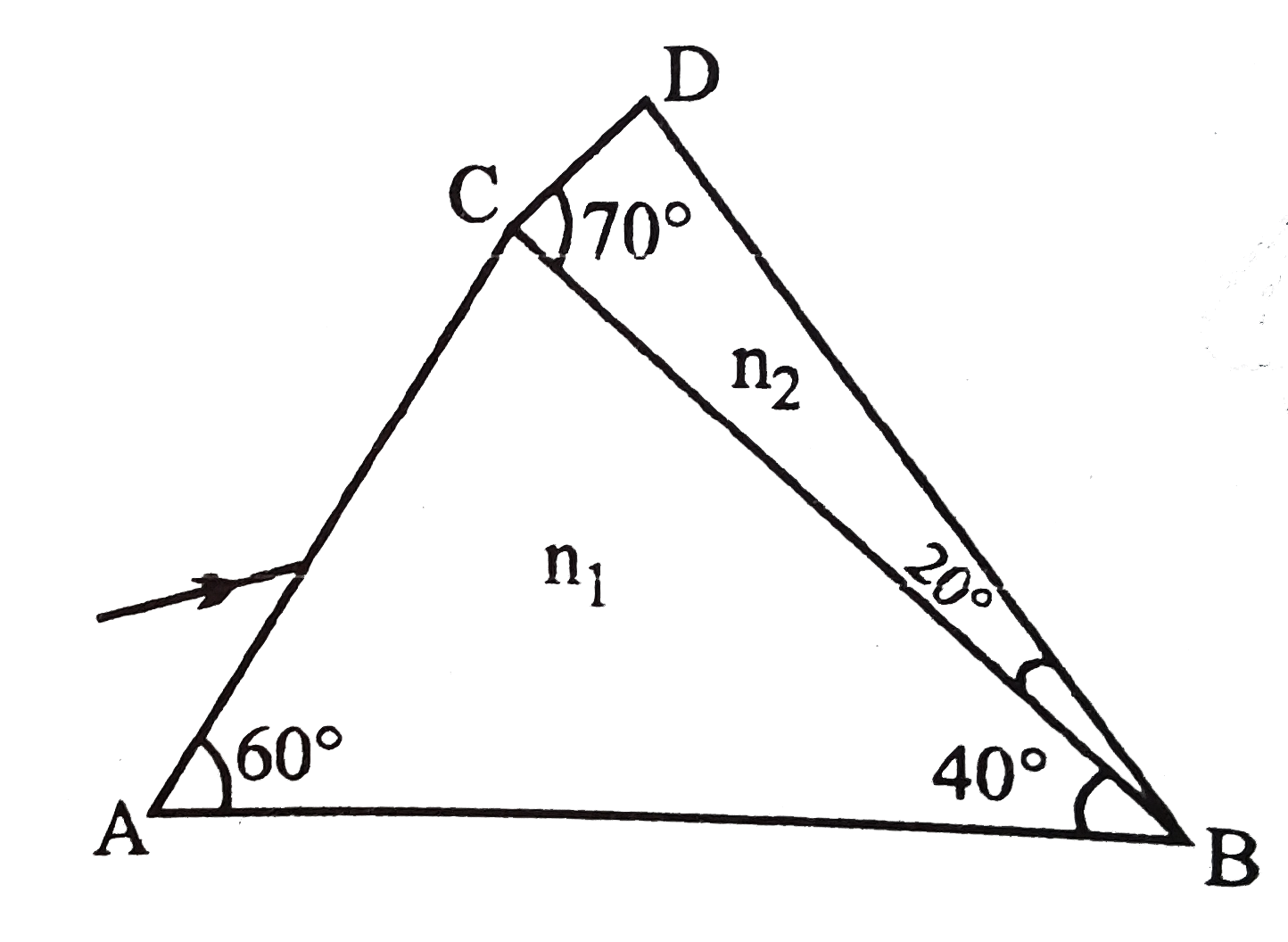_E01_055_Q01.png)
For the double star system, the two stars having masses m1 and m2are separated b a distance r. They are revolving about their common centre of mass in radii r1 and r2 respectively. Which of the following is/are incorrect.?
The whole system can be studied can be studied by replacing it by a single mass m1m2m1+m2 revolgin about the center of mass.
The angular velocity of m2 is less than that of m1
Force acting on m1 is Gm1m2r21 and that acting on m2 is Gm1m2r22
For acting on m2 is Gm1m2r2m2
The correct Answer is:A, B, C
Step by step video solution for For the double star system, the two stars having masses m_(1) and m_(2) are separated b a distance r. They are revolving about their common centre of mass in radii r_(1) and r_(2) respectively. Which of the following is/are incorrect.? by Physics experts to help you in doubts & scoring excellent marks in Class 12 exams.
Updated on:21/07/2023Topper's Solved these Questions
- GRAVITATIONBOOK - ALLENCHAPTER - GRAVITATIONEXERCISE - Exercise 3 (Miscellaneous Type Questions)
20 Videos
- GRAVITATIONBOOK - ALLENCHAPTER - GRAVITATIONEXERCISE - Exercise 4 A (Conceptual Subjective Exercise)
14 Videos
- GRAVITATIONBOOK - ALLENCHAPTER - GRAVITATIONEXERCISE - Exercise 1 (Check your Grasp)
28 Videos
- GEOMETRICAL OPTICSBOOK - ALLENCHAPTER - GEOMETRICAL OPTICSEXERCISE - subjective
14 Videos
- KINEMATICS-2DBOOK - ALLENCHAPTER - KINEMATICS-2DEXERCISE - Exercise (O-2)
46 Videos
Similar Questions
Statemet-1: Two satellites A & B are in the same orbit around the earth B being behind A. B cannot overtake A by increasing its speed.
Statement-2: it will then go into a different orbit.
View Solution_E01_076_Q01.png)
In the given figure L=1 metre if total gravitational force on 4 kg mass is verF1 and on 2 kg mass is →F2 then find out the ratio of ∣∣∣→F2→F2∣∣∣
View SolutionThree identical point mass each of mass 1kg lie in the x-y plane at point (0,0), (0,0.2m) and (0.2m, 0). The net gravitational force on the mass at the origin is
View SolutionA prism of refractive index n1 & another prism of reactive index n2 are stuck together without a gap as shown in the figure.The angle of the prisms are as shown. n1&n2depend onλ,the wavelength of light according to n1=1.20+10.8×104λ2&n2=1.45+1.80×104λ2 where λ is in nm.

(i)Calculate the wavelength λ0for which rays incident at any angle on the interfaceBCpass through without bending at that interface.
View SolutionA particle is moving in the x-y plane. At certain instant of time, the components of its velocity and acceleration are as follows: vx=3ms−1,vy=4ms−1,ax=2ms−2anday=1ms−2. The rate of change of speed at this moment is
View SolutionTwo stars of mass m1 and m2 are parts of a binary star system. The radii of their orbits are r1 and r2 respectivey, measured from the centre of mass of the system. The magnitude of gravitational force m1 exerts on m2 is
View SolutionTwo stars of masses m1 and m2 distance r apart, revolve about their centre of mass. The period of revolution is :
View SolutionTwo concentric spherical shells have masses m_(1) and m_(2) and radii r_(1) and r_(2) (r_(2) gt r_(1)) . What is the force exerted by this system on a particle of mass m_(3) . If it is placed at a distance r(r_(1) lt r lt r_(2)) from the centre ?
View SolutionIn a double star, two stars one of mass m1 and another of mass m2, with a separation d, rotate about their common centre of mass. Find
(a) an expression for their time period of revolution.
(b) the ratio of their kinetic energies.
(c) the ratio of their angular momenta about the centre of mass.
(d) the total angular momentum of the system.
(e) the kinetic energy of the system.
View SolutionTwo stars of mass M1&M2 are in circular orbits around their centre of mass The star of mass M1 has an orbit of radius R1 the star of mass M2 has an orbit of radius R2 (assume that their centre of mass is not acceleration and distance between starts is fixed)
(a) Show that the ratio of orbital radii of the two stars equals the reciprocal of the ratio of their masses, that is R1/R2=M2/M1
(b) Explain why the two stars have the same orbital period and show that the period
T=2π(R1+R2)3/2√G(M1+M2) .
View SolutionA binary star system consists of two stars of masses M1 and M2 revolving in circular orbits of radii R1 and R2 respectively. If their respective time periods are T1 and T2, then
View SolutionIn a double star system one of mass m_(1) and another of mass m_(2) with a separation d rotate about their common centre of mass. Then rate of sweeps of area of star of mass m_(1) to star of mass m_(2) about their common centre of mass is
View SolutionIn a double star system, two stars of masses m_(1) and m_2 seperated by a distance d rotate about their centre of mass. Then their common angular velocity would be:
View SolutionIn a double star system two stars of masses m1 and m2 separated by a distance 'd' rotates about their centre of mass. Then the common angular velocity and time period is
View SolutionIn a double star system, two stars of masses m1 and m2 separated by a distance d rotate about their centre of mass. Then their common angular velocity would be
View SolutionIn a double star system two stars of masses m1 and m2 separated by a distance 'd' rotates about their centre of mass. Then the common angular velocity and time period is
View Solution

